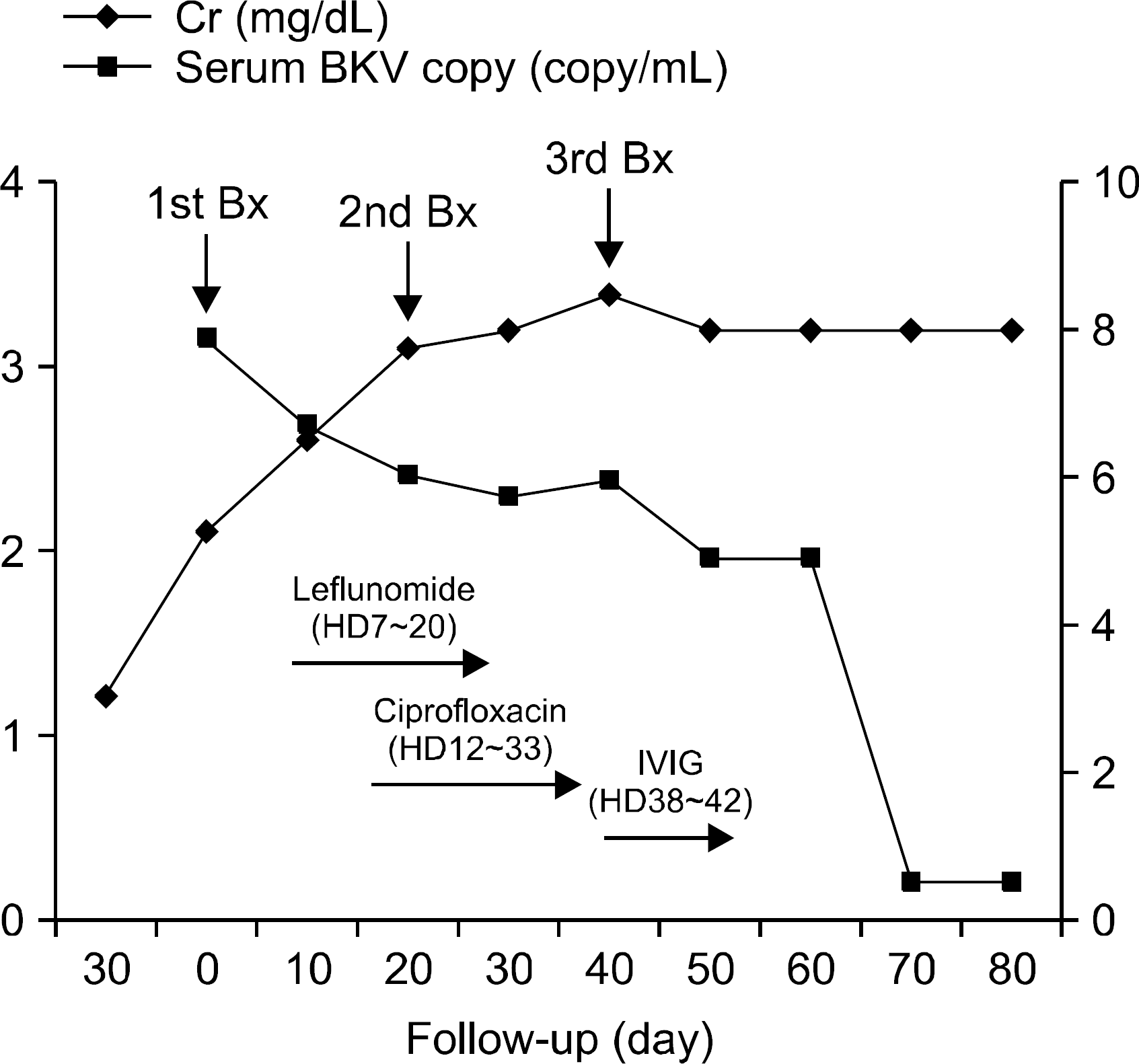Abstract
A 44-year-old man was admitted for evaluation of asymptomatic graft dysfunction. An allograft biopsy revealed diffuse interstitial infiltration of lymphocytes (i3) with moderate tubulitis (t3) and SV40-positive renal tubular epithelial cells. The patient was diagnosed with BK virus nephropathy, and immunosuppression was modified with discontinuing mycophenolate and reducing tacrolimus. Leflunomide treatment was also started simultaneously. However, serum creatinine increased to 3.0 mg/dL; therefore, the patient underwent a second allograft biopsy, in which the crescent was no longer evident but tubulitis (t2) and fibrosis (i2) persisted. On day 20, leflunomide was switched to ciprofloxacin due to leukopenia. The serum creatinine increased to 3.3 mg/dL, and the third biopsy showed slightly improved tubulitis and interstitial inflammation. We then administered an intravenous infusion of immunoglobulin. On day 70, the renal function was stable and the BK serum viral load was low, and the patient was discharged. This is a case of severe crescentic BK nephropathy with successful outcome treated with aggressive treatment and this method will be useful in renal transplant patients.
Go to : 
REFERENCES
1). Dall A., Hariharan S. BK virus nephritis after renal transplantation. Clin J Am Soc Nephrol. 2008. 3(Suppl 2):S68–75.
Go to : 
 | Fig. 1.First renal allograft biopsy findings (×400). SV40-positive cells are present in both (A) tubular and (B) parietal glomerular cells. (C) A glomerulus with a crescent was also evident. |
 | Fig. 2.Clinical course. The patient was admitted because of graft dysfunction. We initially reduced the tacrolimus and discontinued mycophenolate. In addition, we used leflunomide, ciprofloxacin, and intravenous immunoglobulin. After treatment, serum creatinine decreased to 3.2 mg/dL and BK serum viral load was low. Abbreviations: BKV, BK virus; HD, hospital day; IVIG, intravenous immunoglobulin; Bx, biopsy. |




 PDF
PDF ePub
ePub Citation
Citation Print
Print


 XML Download
XML Download